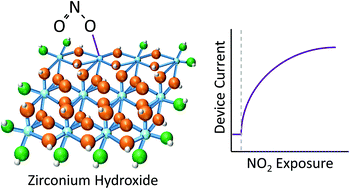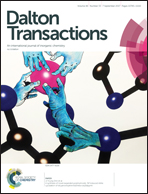Sensing of NO2 with zirconium hydroxide via frequency-dependent electrical impedance spectroscopy†
Abstract
Zirconium hydroxide has been investigated as a candidate nitrogen dioxide dielectric sensor using impedance spectroscopy analysis. Significant changes in electronic and physical properties down to our dosage minimum of 2 ppm h have been observed. Using disc-shaped pressed pellets of Zr(OH)4 in parallel plate geometry, we observe a maximum signal shift of 35% at 2 ppm h dosage, which increases six orders of magnitude as the dosage reaches 1000 ppm h. Changes in impedance correlate with nitrogen and oxygen atomic ratio increases observed via X-ray photoelectron spectroscopy (XPS) at higher NO2 dosages. In contrast to the sharp frequency-dependent features and net impedance decreases during NO2 exposures, Zr(OH)4 exhibits a large and broad impedance increase after exposure to humid air (water vapor). The results indicate that Zr(OH)4 could be used as a selective low-cost impedance-based NO2 detector by applying frequency-dependent impedance fingerprinting.



 Please wait while we load your content...
Please wait while we load your content...